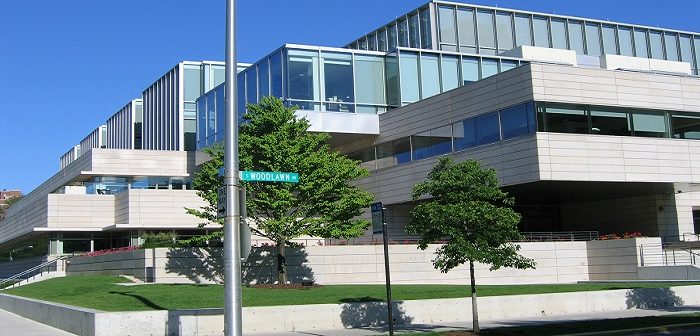Seventy-five years ago, the University of Chicago Booth School of Business launched the world’s first executive MBA program having recognised the need to train executives to lead teams and businesses in a rapidly changing, uncertain world caught in the throes of World War II.
Aimed at imparting rigorous business education tailored to the specific needs of mid-career managers, over the years, the Executive MBA Program has continued to adapt to meet the evolving needs of the business landscape.
It has taught generations of senior leaders around the globe how to maximize their own professional and personal growth, while also developing the people they manage in a rapidly evolving world, says Amy Merrick, deputy editor of Capital Ideas, the research magazine of the University of Chicago’s Booth School of Business.
By the end of the year 1943, two million men had left the workforce to serve in the military. And American women—many working outside the home for the first time—marched into factories in unprecedented numbers to replace them. It was an era of change, as Americans struggled to meet the challenges of the day, she says.
“The very idea of educating people who had significant work experience was a revolutionary way of thinking.”
The success of the executive MBA program inspired hundreds of institutions around the world to develop their own programs. By the 1990s Booth expanded its reach globally with the first U.S. program of its kind to establish a campus outside the country.
With locations today in Chicago, London and Hong Kong, Booth remains the only business school with permanent campuses on three continents and draws students and faculty from around the globe.
“The executive MBA program gives students a more critical, more structured way of thinking about business problems, and that helps them make better decisions and be better leaders,” said Richard Johnson, MBA’14, associate dean for the Executive MBA Program, Asia and Europe. “They also gain a level of confidence they would never have had around what they’re capable of achieving. The experience is transformative.”
How It All Began
In 1942, Willard Graham, an accounting professor at the University of Chicago, began making plans to develop more of those problem solvers. He proposed a new type of MBA program—one that was designed for experienced managers to help strengthen the leadership of American business.
The first executive MBA class entered the University in 1943: a cohort of 52 students, representing some of the largest corporations in Chicago. Among that first class was a manager from the budget and financial studies division of Marshall Field’s, a supervising engineer at Commonwealth Edison, and an assistant district traffic superintendent for Illinois Bell Telephone.
After the war ended in 1945, the focus of the program shifted, but demand for education of all types was booming. “Many returning veterans were very anxious to get back to work and develop the skills that they needed to make contributions,” said Harry L. Davis, the Roger L. and Rachel M. Goetz Distinguished Service Professor of Creative Management, and former deputy dean for MBA programs.
The first executive MBA students completed the program in 1945. In the early years, students were typically in their 40s or early 50s, with decades of work experience but little formal business education. They were taught by the same faculty as students in the full-time MBA program—unusual for part-time programs of that era.
Graduate business education was still a young field at this point, said Glenn Sykes, associate dean for evening MBA and weekend MBA programs and program innovation. Before Booth launched the executive MBA program “most MBA students came through right from an undergraduate program,” said Sykes. “The very idea of educating people who had significant work experience was a revolutionary way of thinking.”
Student demographics in the executive MBA program continue to change as well. Its students today are younger, with a wider range of backgrounds. The average age of the incoming class of 2017 was 37, and students had an average of 13 years of work experience; the cohort represented 46 nationalities.
Through the program, students learn to redefine their roles—and to expand the possibilities for their careers. “I have students who say to me, ‘Well, I’m just a manager,’” said Linda E. Ginzel, clinical professor of managerial psychology. “‘Someday, when I’m a leader, then I’ll be able to do all these other great things.’”
ALSO READ: HBS Class of 2018 Summer Internship Sees Median Base Salary of $8,000
Robert Wardrop, MBA’96, who graduated in the first class of European executive MBA students, pivoted his career from finance to academia. “That two-year experience ignited an interest in learning that was latent, that I didn’t know I had,” said Wardrop, who is now the director of the Centre for Alternative Finance at the University of Cambridge.
Current executive MBA student Adja Diakite has already begun to apply leadership lessons from Booth in her work on interest rates and FX derivatives at Deutsche Bank in London. “You are with some of the smartest and brightest students from around the world, coming from different cultures,” said Diakite, originally from Mali, West Africa, who studies at the London campus. “You learn with them to build your leadership journey. It has enabled me to be a better listener, to prepare more for initiatives I want to take forward, to ask myself the right questions, and to build up my communication and presentation skills.”




